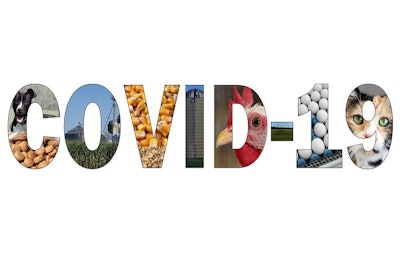
Consumers want options that offer them convenience and meet their values when it comes to sustainability and other issues as they continue to adapt to the “new normal” of the COVID-19 pandemic.
“The world changed for good and bad in 2020. The coronavirus pandemic affected us all. And we acclimatized. Emerging habits accelerated. How we behave, spend and consume will never be the same again,” explained Gina Westbrook, Director of Consumer Trends, Euromonitor International.
“In 2021, we're adjusting our actions. These differ amongst consumers, and sometimes they conflict. We want to make the world better, either for our own sake or for humanities. We want new ways to make life both convenient and safe inside and out.”
Westbrook shared Euromonitor International’s predictions during Top 10 Global Consumer Trends.
Restless and rebellious
Frustrated by strict social distancing and quarantine measures, some consumers are rebelling by treating themselves to extravagant “revenge shopping” as soon as rules are lifted, including indulgences in packaged food.
Consumers are also looking to build trust with brands after a year where distrust – in politics, the media and misinformation on social media – was rampant.
Shaken and stirred
The pandemic upended daily life for consumers, testing their mental resilience. Many consumers have been forced to reassess priorities and identities and reconfigure all aspects of their working and personal lives.
As a result, consumers are turning to the things that bring them comfort – from a favorite game to home-cooked recipes.
Thoughtful thrifters
Consumers are reassessing their values and priorities, especially given the global economic uncertainty brought on by COVID-19. Many have delayed large purchases and put off purchasing discretionary items where possible. Price has become a major factor in deciding which products or brands to buy.
Safety obsessed
Unsurprisingly, health and safety became a huge concern for consumers during COVID-19. This drove demand not only for hygiene products, but also pushed consumers toward contactless solutions, such as curbside pickup and delivery for foodservice.
Phygital reality
Phygital reality describes the blending of the physical and virtual worlds where consumers could live, work, shop and play online and in person. In 2020 and beyond, consumers embrace video conferencing, smart appliances like the Amazon Alexa and other technologies that help them interact and connect with the world safely.
For example, Sanderson Farms introduced Google Home and Amazon Alexa-activated recipes, a hassle-free solution that gives consumers access to more than 180 recipes, including garlic parmesan chicken wings, Mediterranean chicken thighs and chicken fajitas.
Craving convenience
COVID-19 forced consumers to upend their normal behaviors, leaving many longing for certain conveniences that were previously taken for granted.
Many shoppers turned to digital ecommerce to try to recapture this ease. Usage varies by generation – younger shoppers are more likely to make purchases online compared to older consumers.
For in store experiences, some businesses offset inconveniences – like social distancing – with ground markers to show how far apart six feet is or QR codes that bring up menus easily to bring value to consumers.
Workplaces in new spaces
The pandemic accelerated the trend of remote workspaces as social distancing brought offices into homes nearly overnight. Consumers struggled to adapt to the sudden change, coping with difficult working conditions, changes in daily routines and figuring out when the workday begins and ends when the location did not.
Businesses that typically benefited from commuters – like coffee stores or restaurants that catered to the lunch rush – had to flex to continue to bring in business.
Playing with time
This trend goes together with workplaces in new spaces. The pandemic has both added flexibility to each day – by reducing the amount of time spent commuting – and forced consumers to be creative with time management – especially with many children participating in remote learning.
As a result, consumers want solutions that match their unique needs and give them the flexibility they desire. Businesses are adapting by adopting a 24-hour service culture and expanding virtual options like ghost kitchens.
Outdoor oasis
Deprived of the ability to socially gather indoors, consumers spent much of their leisure time outside in 2020. This trend is expected to continue in 2021.
For foodservice, the ability to serve customers via outdoor dining was a major source of revenue in 2020, especially during the warmer months.
Build back better
Sustainability continues to be a concern for consumers. Long associated only with environmental issues, sustainability has transformed into a catch-all term that also encompasses animal welfare, social and other issues.
There is now an expectation among consumers that brands need to act with a purpose. For example, a corporate social responsibility (CSR) program can help a company demonstrate good corporate citizenship.
View our continuing coverage of the novel coronavirus (COVID-19) pandemic.
Like what you just read? Sign up now for free to receive the Poultry Future Newsletter.


















